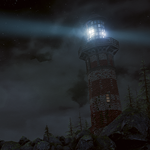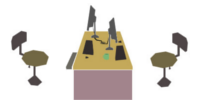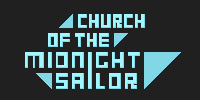Interview: The Lighthouse Development Team
With a Kickstarter campaign for The Lighthouse in full swing and project buzz growing, Shadow Knights Studio seeks to thrill with a supernatural missing person mystery adventure taking place in Maine, 1964, and I chatted with the development team on their vision and goals.
Erik Meyer: The image of a lighthouse stands as a monolith, a spire in the night sky; alongside your game, titles like Bioshock and Lighthouse: The Dark Being have incorporated similar imagery to great effect. What is it that draws us to lighthouses, and what drew you to incorporate this central detail into your project?
Shadow Knights Studio: Great games! We have always found Lighthouses to be mesmerizing due to their size and beauty. Literally, they are used to help navigate fishermen and sailors while they are traveling in the dark or uncharted waters. We extend this concept to our game design- Your journey through the dark won’t be easy, so like a moth to a flame, your goal is to get to the lighthouse light- both literally and figuratively. There’s a lot to analyze, but this concept really works well for our game because we think, biologically, all humans are drawn to light- or towering structures. The fact that humans have been using starlight to navigate for tens of thousands of years probably has a lot of influence to how we are all drawn by light. It’s probably the same reason Frodo and Sam have to travel to Mount Doom, or when Atreyu and Bastian had to travel to the Ivory Tower, or when Dorothy had to travel to Oz. We believe this simple form of storytelling is very powerful and, in our case, keeps the player’s attention focused on the final goal.
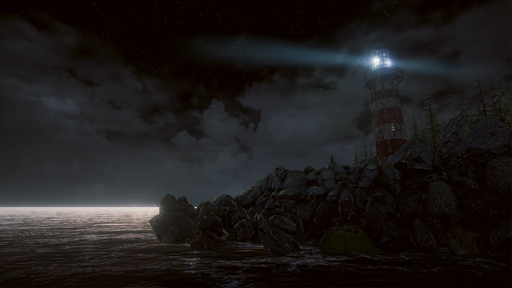
EM: Players take on the role of investigator James Irvine searching for a missing woman in a neo-noir adventure; what do you see as the critical must-do elements of the genre? What kinds of elements or plot holes have you intentionally avoided, and what do you use to guide you through plot/character revelations?
SKS: Before we get into genre specific elements, I think it’s important that we bring up video game specific must-dos- especially for an indie title. Things like player interactions, audio, interfaces, and overall fluidity are Must-Do’s. Our team is very critical- we believe that we need to make sure that all UX controls and designs are close or equal to that of a AAA experience. Yes, we don’t have the budget to make a 40 hour long AAA game, but the experience that we provide should be excellent and worthy of any gamer’s time.
As far as genre specific- there’s not a whole lot we can avoid. You will be walking, opening doors, interacting with items, using a flashlight, etc. And that’s okay, we don’t want to re-invent the wheel in that sense, but more importantly, we don’t want to confuse or frustrate players coming from bigger AAA games who want to play an indie game like ours.
Even with that, our goal is to avoid as many genre clichés as we can. You won’t see bleeding walls, or when you pick something up and turn around, nothing will be standing near your face.
As far as story, we all sat together as a team 2 years ago and started world building beyond the main narrative. We did this for two reasons:
A] Ground all the characters and events so that what the player experiences is believable.
B] Avoid writing ourselves into a wall by fleshing out the story so that every counterpoint to the narrative can be addressed.
Without giving too much away, Lily is not a zombie or vampire and you don’t find out that Irvine was the killer the whole time. We made sure to write something very unique and different and tell the story through a direct line of communication. Our approach with the main story arc will reveal itself as the game progresses bit by bit. We’ve chosen a novel approach, too, anything that’s colored white in our game is story related.
EM: The environments within the game, from nighttime forests to misty playgrounds to interior building shots, have a precise yet haunting quality. How have you approached the addition of assets as a team? What visual cues and details reinforce the world you’re building, and what is your process for adding and expanding these aspects of the playing experience?
SKS: Thank you for the wonderful compliments. We have a very talented artist who works tirelessly to create art for The Lighthouse and a lot of the art direction wouldn’t have been as meaningful without her insight. Because we are a small team, we undoubtedly need to make sure we are on schedule with our deliverables, so we also contract out a lot of 3D modeling to some very experienced environmental artists. Without their help, we would never be able to hit our milestones.
Our process in environmental design is to create the environments based on specific feelings. We know what the player should experience and we try to visualize that as best we can. For example, the playground scene was meant to recall a time long since past. The key word is “recall.” When you recall something, it’s always crystal clear what you remember most, but some of the lesser details are foggy, or lost entirely. This concept is cornerstone to our design. Rather than just showing off a highly detailed environment, we try to tell a story within it.
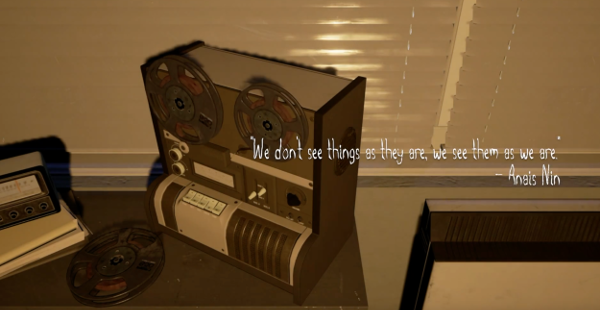
EM: Your Kickstarter campaign has already surpassed its goal, so I’m curious about that part of the project. What kinds of planning went into launching your effort, and what kinds of responses have you gotten?
SKS: This was our second run on Kickstarter and we are so grateful we’ve reached over 225% of our initial goal. It should be noted that we weren’t trying to kick-start an idea, we are crowdfunding a game that is in development right now to make it better. We learned a lot from our first attempt at Kickstarter. We gained a great community who were very helpful with their feedback and are incredibly supportive and sincere. You could say that we’ve made a lot of friends since we started this journey. It was beautiful when we returned, because on our first day back to Kickstarter, our original backers really boosted our campaign momentum all on their own. Also, being chosen by Kickstarter as a “project we love,” we really got a lot of attention from people who haven’t heard about us before.
None of this is easy- it took almost 5 months to return to Kickstarter, and that’s after we spent a lot of time planning and actually understanding what makes a good crowdfunding campaign. Additionally, running a campaign is a full time job, and our team works every day to spread the word and follow up with the mountains of emails and letters we get from gamers. We thrive on critical feedback, and we always do our best to improve. We are truly humbled that most people love what they see and play. We ask anyone who likes thriller or horror games to download our alpha demo and try it out. We think you’ll like it a lot.
EM: A great soundtrack elevates a game, and you have Mimi Page composing for the project. When it comes to sound, including music, sound effects, and spoken elements, what does your roadmap look like? Do you see audio as a supplement/companion/added wrinkle in combination with the visual experience, and what steps are involved in integrating audible cues and features?
SKS: Audio is so important that it actually drives some of our design choices and ideas. For instance, we research a lot of audio instruments like the Apprehension Engine and study what makes these sounds scary. Sometimes, we just close our eyes and listen to music or sound effects and compare our feelings afterwards. Someone from the team will share an idea of what they felt as if they were playing a part of the game while that song or sound played.
One of our members even made a developer diary talking about audio and how The Lighthouse will sound different than other games- namely the ship vessel sound palette. These sounds all create a deep feeling of dread.
Mimi Page is one of those composers that strikes gold every time she comes back from her studio. It becomes our favorite day of the week to hear what she has come up with after we meet to talk about story elements. She rarely needs any direction- all we do is play the game for her in specific parts, and explain what the player should be feeling at that moment. From there, she paints the world with her music and all you feel are goosebumps.
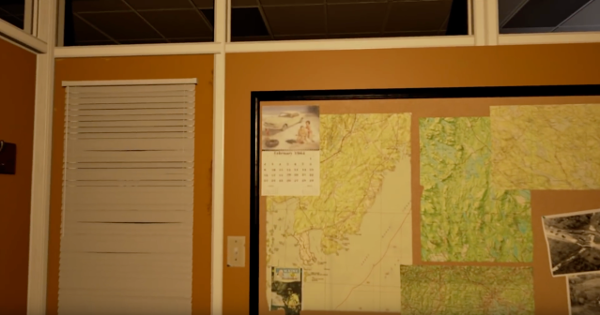
EM: Placing a project in a specific time (in this case 1964) makes it a period piece, as it were, which effects everything from cars, building methods, technology, and clothing. You mention googling in a developer diary, so as a production team, what level of depth has this entailed for you?
SKS: Googling is only part of the story, the other half is meeting with family members who grew up during that time and hearing how their daily lives were. We spent a lot of time researching and studying that era to make sure that when the player is playing- they truly feel like they’ve been transported to the ‘60s. Rock Star Games did a fantastic job with L.A. Noire, and we want to try and get as close as we can to that vibe without it being the only thing the game is about. As far as level design and script work, a lot of care has been taken to make sure verbiage and lingo match the time period. Also, 3 pin electrical outlets didn’t exist yet so, yes, details like that had to be taken into consideration.
We’re big Stephen King fans, so Maine is a nod to his work and the time period helps pull the player back to a place where you can’t just whip out your cell phone and call for help.
EM: Balance can be a tricky space within gaming, much less with point and click elements, so considering the horror/supernatural aspects and the player’s need to unravel the mystery, do you have any hard-and-fast pacing rules, or do you go on organic feel?
SKS: Definitely the organic feel. We want to stay away from jump scares and naturally make the player feel uneasy about everything they are doing. When we played Amnesia, we actually didn’t want to go open that door. There was this dread and anxiety that lasted throughout the adventure. For us, it’s absolutely a balancing act since everything is always building up, and we need to make sure the payoff is worth it. We believe less is more- it would be super easy for us to constantly jump scare the player in The Lighthouse, but I think the way we are doing it will leave a lasting impression, even when you’re not playing the game anymore and are walking throughout your house alone at night. Say the wind blows the door to your room ever so slightly, we want players to remember The Lighthouse scares and feel uneasy, even after they are done playing the game.
With regards to puzzle solving, because we are trying something new with The Lighthouse light mechanic, we really have our work cut out for us to make sure every light-based puzzle is challenging enough to be fun, but not so frustrating that no one knows what to do at all. Our puzzle directions are greatly influenced by Portal’s puzzle design- in that it introduces the central mechanic and builds on it from there.
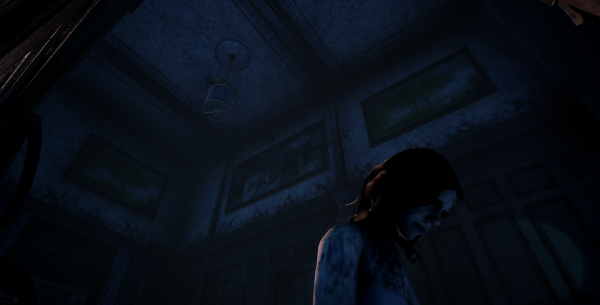
EM: Shadow Knights Studio has a varied background, with role playing game design in its history and Love Monsters! as a previous project. You also mention that creating AAA games is part of your philosophy, so what was the genesis of The Lighthouse as a project, given this variety of experiences? What was the aha moment that set you in motion?
SKS: We have built many different games before, and every time we try to do something new. As game developers, there are thousands of game ideas floating around your head at any given moment, and there are a handful that are great and should be prototyped. Once you prototype those, from that handful, you’ll find that maybe one is really fun to play. For The Lighthouse, it just clicked, especially in a horror setting. We have some really amazing ideas on how to utilize this mechanic that haven’t been done in games before. So, hands down, the major reason why we are making The Lighthouse is because this game absolutely needs to exist! We all have trouble sleeping because we just can’t stop working on the game. The passion is too strong and The Lighthouse light mechanic was so striking and unique that it begged to be explored further. There is no doubt in our eyes that The Lighthouse will be one of those games that is different from the pack. We knew that we needed to invest our lives into this project so that players can experience something new, something that could hopefully nudge the genre forward or even in a different direction. We hope to realize our vision for The Lighthouse, and we hope the gaming community will help us make it as great as it can be.
In case you missed it, here’s the trailer:

